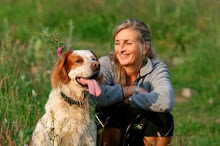Hints for developing "A Right Relationship"
Understanding comes first.
‘This for that’ assumes you have properly trained what you want your dog to do first. This means pairing a cue such as a hand signal and/or the word ‘sit’ with the behaviour you want (bottom on the ground) followed by a reward many, many times until your dog understands the connection between your cue and the behaviour. This is the ‘education’ part of your responsibility and in most cases will be made much easier for you and the dog if you are able to attend a good reward based training school.

‘This for that’ assumes you have properly trained what you want your dog to do first. This means pairing a cue such as a hand signal and/or the word ‘sit’ with the behaviour you want (bottom on the ground) followed by a reward many, many times until your dog understands the connection between your cue and the behaviour. This is the ‘education’ part of your responsibility and in most cases will be made much easier for you and the dog if you are able to attend a good reward based training school.
Have a plan.
Many people complain about their dog’s behaviour but when I ask what they would like their dog to do they simply say “be good” but what exactly is ‘good’? Be specific and plan exactly what you will train your dog to do in every routine situation. For example when visitors arrive “I will train my dog to run to his mat and lie down.” Now what you want is clear in your mind and can be transferred into positive action rather than simply shouting at him for jumping up when visitors arrive. This is thoughtful, proactive training and reinforces the idea that you are quietly ‘in control’ of the household and can be depended upon to teach your dog what is expected of him in every day situations.
Take away rewards.
‘This’ for ‘that’ will only work if there is no choice of ‘or the other’. For example, you may offer your dog a treat for coming in the park but if he can choose to play with other dogs instead, he has chosen ‘ the other’ reward – that the environment has provided. Again proactive training is required. Attaching a long line on your dog before he is allowed to ‘go play’ gives you the opportunity to remove the reward of playing with other dogs. Your dog will learn that if I don’t respond to ‘come’ – play ends (you bring the dog in on the long line) and I don’t get a treat. If I do come, I get a treat, a pat and I get to go play again. It is vital that your game is always the best game in town.
Don’t get mad – get even.
Dogs are really impressed by people who are cool, calm and in control. Imagine this scenario and see which owner you would be more likely to accept direction from:
You are a dog out in the yard barking because the kids next door are spraying the hose at each other and screaming.
Owner A: opens the door, steps outside waving his arms around and shouts something very loudly – almost as loud as the kids. You stop and stare briefly then continue barking.
Owner B: Quietly steps out of the house with lead in hand. He attaches the lead asks you to ‘sit’ and gives you a small treat. You are led into the house and asked to settle on your mat for a while.
Owner A has probably achieved nothing. From the dog’s perspective, he joined in the noise making for a while then went inside. If Owner A has ever caught and punished the dog, it is unlikely he would even be able to quickly attach the lead as the dog would have learned to avoid him when he ‘looks and sounds like that!’
Owner B’s dog knew he was under no physical or emotional threat because his training has been based on rewards and positive, instructive interactions. The dog was therefore easily caught and brought inside. Never get mad, just get even by applying sensible management techniques to make it easy for your dog to learn what you want.
Enduring Motivation.
A ‘right relationship’ is built not through fear or intimidation but through trust and mutual respect. By applying the ‘this’ for ‘that’ principle consistently throughout your dog’s life, you are providing access to everything he wants through co-operation with you – a win-win situation for all.
Our thanks again to Karin Bridge, President A.P.D.T. for contributing this article.







No comments:
Post a Comment